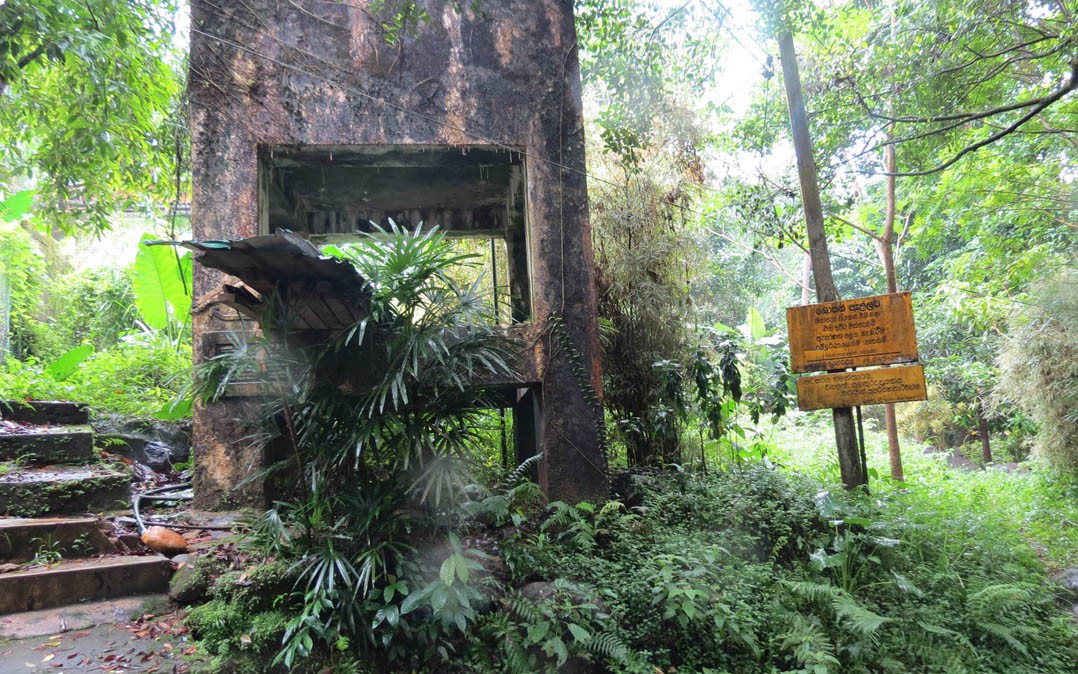
Off to Ratnapura and then Colombo, where culture and heritage are impeccably preserved and celebrated as an identity

I was selected as an academic supervisor to oversee my institution’s jewellery department’s two-week-long trip to Ratnapura, located in the south of Sri Lanka and 101 kilometres from Colombo for a gemstones’ cutting course.
Ratnapura, known in Sinhala as the ‘city of gems’, is an industrially established gemstones city. Ratnapura’s gem cutting expertise is world class. It is famous for its Gems and Jewelry Research and Training Centre and precious stones mining including ruby and sapphire. Many gem traders and businessmen operate from here, as the core of Ratnapura’s economy is dependent on its gems industry.
It is an ideal destination for jewellery professionals and students from Pakistan in terms of exposure to lapidary and gemology research.
In the midst of pre-forming and cutting Quartz crystals over two weeks of intense hands-on demonstration and practical exercises, I got to experience Sri Lanka, formerly Ceylon, a small island with unwavering hospitality.
Touching down Bandaranaike International Airport, Colombo and departing for the bus that was to take us on a nearly three-hour-long drive to Ratnapura, we were met with coastal weather: clear blue skies, bright beach-morning light, and dense green indigenous coconut palms dotting the landscape of the coastal city. The journey to Ratnapura had me completely overwhelmed, as it offered Sri Lanka’s trademark green charm, its indigenous shrubs, gently elevated hills and mountains and beautiful ornate temples.
Drained of travelling, I would close my eyes for a moment, and open them to find myself in surroundings cloaked in a garment of a beautifully-altered landscape. The way such sights of meticulously-constructed temples would appear and disappear again, was a very rewarding cultural token for the devoted traveller in me. The many ornate temples in the land of verdant tea plantations were the core attractions and a balm for disquiet and chaos in our daily lives.
After one of our classes wrapped up in the evening, we took a stroll to explore Ratnapura, grounded in hopes that the activity might help us get far richer cultural details and narratives than what bus rides might skip. As I walked across the dense fretwork of leaves, I saw little monks wearing bright orange robes playing around and leaning against trees. A strange calmness took over as I saw their institution of learning slightly ahead. The varieties of trees had disappeared, and what appeared was a huge coral pink, 84 feet tall, Samadhi Buddha Statue at the Sri Maha Temple. The colour of the hovering statue appeared sharper and more vibrant -- the outline defining its monumental presence against the cloudy sky.
Twice during our stay, we got to drive up farther ahead Ratnapura, towards a stunning town called Lellopitiya, known for its famous Silver Ray restaurant to stop for the amazing tea that is served there. This quaint, luxurious eatery is located in the midst of lowland hills, which, in many ways, reminded me of Murree or Hunza, where clouds and mist float and scale mountain peaks.
The first week of the intensive gems cutting course concluded with a retreat to Bopath Ella Waterfalls, located in Ratnapura District. The name Bopath is derived from the Bo tree, as the way which the water cascades down its narrow opening imitates the structure of the sacred fig leaf. With over 103 rivers, streams and waterfalls gracing former Ceylon’s central hills, Bopath is one of the waterfalls where standing at the stream’s edge, hearing the magnificent roar of water can provide the perfect conclusion to a trip around Ratnapura’s lush green jungles and rainforests.
Where Ratnapura offered us a green and natural facet of Sri Lanka, Colombo was surreal. It seemed so foreign, yet so familiar. Its neutral, grey or unusually very white architecture carries a thin occidental layer within an oriental vessel. The Dutch and Portuguese influence is visible.
Our Colombo itinerary started with National Museum of Colombo, exploring both the miniature and the monumental that constitutes Sri Lanka’s culture: jewellery, stupas, thrones and ancient scripts. Just a short drive ahead, with few diversions, lies Colombo’s most intricate and crucial institution of learning and community centre, the Gangaramaya Temple. Brush past the gigantic rows of palms, and an overtly ornate, eclectic mix of Thai-Chinese architecture, lions, nymphs, vases, then exterior walls façades sprouting out their gold ornaments offer a noble, striking contrast against the carbon-black slate pavement.
Our next stop was a temporary stopover at the Old Dutch Hospital Shopping precinct. A gorgeous corridor led to a fort-like building in Dutch style, with geometric, grey concrete benches and tables where one could enjoy authentic seafood, southern Sri Lankan-Western dishes and tea under the open sky.
The significant elements of the land --- tea, cinnamon, gemstones, flavourful cuisine, borrowed from Indian and colonial elements of Dutch, Portuguese and British -- weave through Sri Lanka’s own cultural fabric impeccably. Without betraying their 2,000-year-old culture, the heritage of Theravada Buddhism, dance, visual arts and music has been preserved and is celebrated as their identity. They speak English slowly and with grace, extending their politeness to people from all walks of life irrespective of social standing - for "everyone is basically seeking God, you see", as was pointed out by the professor who taught us the course and accompanied us to the Gangaramaya Temple.
Later in the evening, I noticed him instructing the kitchen staff about a special vinaigrette ginger-herb dressing to be tossed on our salad. I remember starting with plain rice and vegetables on my plate, and then adding a tiny bit of curry paste consisting of chilli flakes, spices and shredded coconut on the side, eventually working my way to a perfect balance between simplicity and flavours. Eating it, I realised I had arrived at the core of what Sri Lanka is: flavourful yet harmonious.